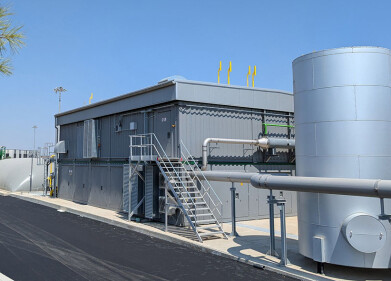Air clean up
What Is the UK National Air Pollution Control Programme?
Apr 13 2019
The government has announced its National Air Pollution Control Programme (NAPCP), a nation-encompassing document which sets out measures and provides analysis on how it plans to meet EU targets for emission reduction commitments (ERCs) of five airborne contaminants.
The pollutants which fall under the NAPCP’s remit are ammonia, nitrogen oxides, non-methane volatile organic compounds, particulate matter and sulphur dioxide. According to the Department for Environment, Food and Rural Affairs (DEFRA), the UK is on track to meet 2030 ERC targets if its Clean Air Strategy, which looks at ways of improving air quality and reducing transport-related pollution, is implemented correctly.
Optimistic outlook
The NAPCP suggests that the protocols and practices suggested by the government will be sufficient for the country to meet the ERC targets for all five contaminants. Specifically, it forecasts that sulphur dioxide emissions will drop by between 92% and 95% by 2030 compared to 2005 levels, which is above the 88% stated in the ERC.
Nitrogen oxides are expected to fall by between 72% and 76% (the target is 73%) and particulate matter by 42% to 52% (with a target of 46%) and non-methane volatile organic compounds by 36% to 40% (the target is 39%). The target for ammonia, on the other hand, is 16% and the report states that reality could either fall short of the target (with just a 4% reduction) or greatly surpass it (with a 26% one) depending on how well agricultural practices are policed going forwards.
Building on existing success
The figures may sound optimistic to an outside observer, but the truth is that the situation has been showing steady progress over the last decade or so. Government records show that nitrogen oxides emissions had nearly halved between 2005 and 2016, while sulphur dioxide was over three quarters less (77%), non-methane volatile aromatic carbons were down by a third (33%) and particulate matter by 15%.
Again, ammonia has thus far shown the least progress, with a mere 3% drop between 2005 and 2016. With the vast majority of ammonia emissions resulting from livestock cultivation, greater regulation of the industry is needed if more encouraging signs are to be seen in the future.
Not everyone is satisfied
Of course, there are many outspoken critics who feel the government’s plans do not go far enough. Aside from having been taken to court multiple times (and having lost on each occasion) by environmental law firm ClientEarth, the government has also come under fire from opposition politicians and concerned environmentalists who believe their proposals are too vague and not far-reaching enough to have the desired effect.
Events
May 18 2025 Algiers, Algeria
23rd International Water Management Exhibition
May 20 2025 Prague, Czech Republic
Singapore International Water Week Spotlight 2025
Jun 23 2025 Singapore
Jun 25 2025 Sao Paulo, Brasil
Jul 02 2025 Bangkok, Thailand
.jpg)













